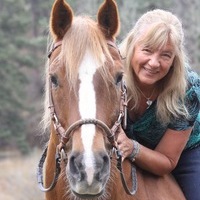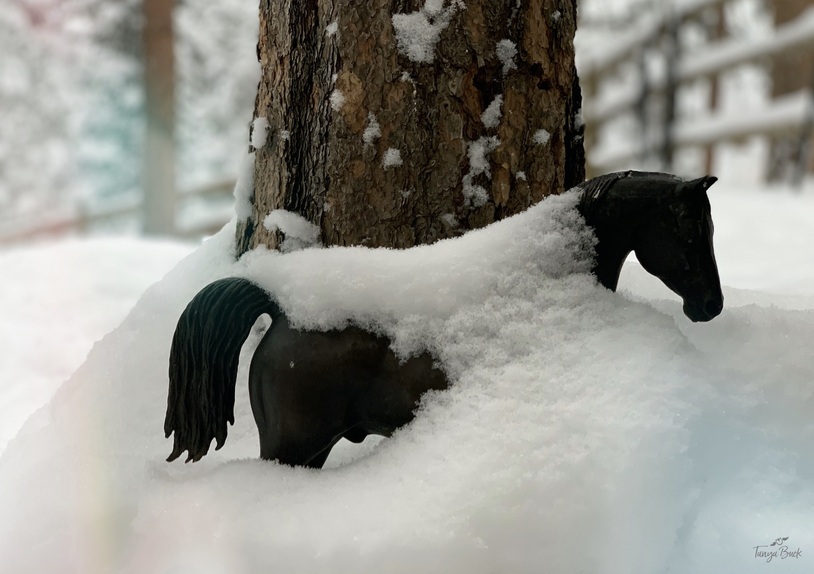Snow, snow, and more snow here, but I’m staying optimistic and eagerly awaiting spring! Ah, springtime, the time all horse owners, riders, and equid caretakers look forward to, because finally, riding days have arrived! There are so many things to get in order and to take care of as the weather changes.
So many questions need answers, and so many options could be correct! Here in Colorado, we have been plagued with snow and fluctuating temperatures that keep most of us in a state of concern, if not downright worry. Should we blanket or skip it? Can we turn off the tank heater, or will the water freeze overnight? Will we ever see the earth again, or is our world to be terminally white from here on out?
Here is my Spring Checklist and how I maneuver these unpredictable times.
Since I monitor my horses all year long regarding their weight, health, and fitness, I know where mine stand, but if you do not do this, start with visits from your veterinarian, trainer, and farrier.
-
Schedule an appointment with your veterinarian for a complete physical exam.
-
Schedule your trainer and body worker for a full-body evaluation before conditioning.
-
Start slow. I can’t repeat this one enough times. Your horse is out of condition if he’s had the winter months off, just like us!
-
Ask your vet about conditioning and nutrition for your area.
-
Get vaccinations and Coggins Test if needed for travel or shows.
-
Have a thorough lameness and soundness exam done. Get X-rays if needed.
-
Your farrier should do an evaluation and set a schedule based on your upcoming riding season. Discuss shoeing if indicated and how often to trim if not.
-
If you use boots instead of shoes on your horse, check for any repair needed or order new ones. Have your farrier help measure if you are unsure.
-
Take an inventory of your tack and repair, replace, or clean as indicated.
-
Deworm your horse or have a fecal egg count test done to see if deworming is needed.
-
Have a dental exam done and float as suggested.
-
Get your trainer out to evaluate fitness and set goals for the coming riding season.
-
Set up and follow a conditioning regime for both you and your horse by planning your season.
-
List goals you would like to meet this year and be flexible and forgiving if you don’t get to all of them.
-
Map trails you hope to ride. Start with shorter, easier routes and build up to longer, harder ones.
-
Be mindful of your older horse and his needs. It takes longer to condition him.
-
Begin your riding or driving schedule slowly if your horse has been idle during winter.
-
Set a budget for the upcoming show season or trail riding trips you want to do.
-
Budget for training and clinics. Include stabling and travel costs. Get hotels lined up early!
-
Watch the grass and read up on grass-induced founder and colic. Limit intake if indicated.
-
Get your feeding schedule switched over to summer needs. More grain? Less?
-
Ease horses onto pasture if they have been eating only hay all winter.
-
Pasture overnight if possible or early morning. Grass has lower sugars during these times.
-
Set up a fly control system. Fly Predators, fly sheets, boots, fly spray, or whatever you decide is best for your own setup and needs.
-
Decide how you will rotate your pastures.
-
Clean, repair, and store winter blankets, then spray with a waterproofing spray.
-
Check your fly sheets and coolers for any repairs needed.
-
Work on your paddocks, pastures, and stalls for drainage.
-
Check fencing and repair as needed.
-
Take your horse trailer in for a check-up; look at floorboards, tire condition, wiring, and brakes. Do the same for your truck.
-
In spring, horses are in the process of losing winter coats. Help by grooming daily and spend more time than you think you need. Use shedding blades and any other tricks you know!
-
If you begin conditioning before he sheds out, take time to cool him properly.
-
Clip his coat only if you must—he’s better off shedding it naturally.
-
If you clipped your horse, he may need his blanket longer.
-
Horses used to having a blanket all winter still need one when temperatures drop.
-
Be sure your water is warm and the tank heater working until the threat of freeze is past.
-
Check for thrush and rain rot daily if your area has wet spring weather.
-
Evaluate saddle fit, even if your horse has been comfortable in the same one for years. Bodies change with age.
-
Clean all your tack and oil it, especially if you plan on riding in rainy conditions.
-
Get your first aid kits in order—yours and your horses’.
-
Check your gear. Do you need a new helmet? New boots?
-
Make sure your Go Bag is packed and ready for whatever discipline you enjoy. Trail riders, get your snacks, hoof pick, first aid kit, pocket knife, and water bottles ready. Check those saddlebags. Grab your maps!
-
Show people, pack an extra show outfit, rubber bands, hoof polish, and snacks. Be sure you’ve done all the paperwork and joined the clubs and registries you must.
Talk with your friends, vet, farrier, and trainer about your riding plans and enjoy your upcoming riding season.
Saddle up, Happily Ever After!
~Tanya Buck
FREE Stuff through my website at TanyaBuck.com, and a FREE copy of Trail
Riding Tips here: https://lp.constantcontact.com/su/Qa0qA96/HorseClicks



